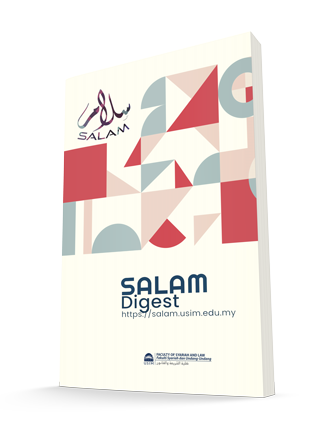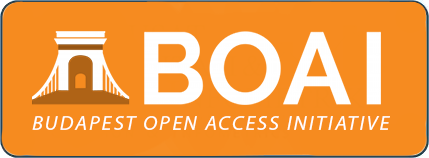AN ANALYSIS OF FRAUD AND MISREPRESENTATION OF HALAL LOGO FOR COSMETIC PRODUCTS IN MALAYSIA
Keywords:
Fraud, misrepresentation, halal logo, cosmetic, MalaysiaAbstract
Fraud and misrepresentation of the Halal logo for cosmetic products pertains to the deceptive or misleading use of the Halal logo on cosmetic products within the Malaysian market as a predominantly Muslim country whereby the Halal certification holds religious significance for Muslim consumers. This offence raises concerns regarding the authenticity and compliance of cosmetic products with Halal standards. The misuse of halal logos and certificates such as displaying logos not accredited by JAKIM has caused confusion among Muslim consumers, leading to a decrease in trust in the Malaysian halal logo. As a result, Muslim consumers may unknowingly purchase non-halal products and potentially expose themselves to harmful ingredients. Thus, the primary objective of this research is to analyze the offences associated with the Halal logo on cosmetic products while examining the agencies and authorities involved in Halal implementation and evaluating the regulatory framework governing the issuance of Halal logos for cosmetics in Malaysia. Utilizing a qualitative method, including articles and journals, standards and regulations that existed, in addition to relevant case studies, the research was seeking in-depth understanding of Halal certification and the problem of fraud and misrepresentation of Halal logo for cosmetic products. The findings indicate consumer awareness regarding these deceptive practices is found to be limited, emphasizing the need for increased transparency and education. Hence, proposes recommendations to implement stricter regulations and enforcement mechanisms to deter and penalize fraudulent activities while protecting religious sensitivities.
References
Ab Halim, M. A., & Mohd Salleh, M. M. (2020). Consumer rights in Halal products: A study based on legal and Syariah perspectives. In Food Research (Vol. 4, pp. 281–290). Rynnye Lyan Resources. https://doi.org/10.26656/fr.2017.4(S1).S31
Ab Halim, M.A., & Ahmad, A.A. (2014). Enforcement of Consumer Protection Laws on Halal Products: Malaysian Experience. Asian Social Science, 10(3), 9-14. http://dx.doi.org/10.5539/ass.v10n3p9
Ab Halim, M. ’Afifi, Mohd Kashim, M. I. A., Mohd Salleh, M. M., Nordin, N., & Muhammad Husni, A. (2015). Halal Pharmaceuticals. The Social Sciences, 10(4), 490–498.
Ab Talib, M. S., & Mohd Johan, M. R. (2012). Issues in Halal Packaging: A Conceptual Paper. International Business and Management, 5(2), 94–98.
Abdul Halim, A. H. (n.d.). Halal Authority in Malaysia.
Abdul Halim, A. S., Aghwan, Z. A., & Hashim, N. (2023). The Significance of Halal Logo on Cosmetic Products: A Review. Abstracts of the International Halal Science Conference 2023, 33–37. https://doi.org/10.21467/abstracts.155
Abdul Wahab, N., Abdul Hamid, N. A., Mohd Shahwahid, F., & Miskam, S. (2018). Malaysian Halal Laws: Issues and Challenges. Medwell Journals, 13(3), 769–775. https://www.researchgate.net/publication/324719904
Ahmad, A. N., Rahman, A. A., & Rahman, S. A. (2015). Assessing Knowledge and Religiosity on Consumer Behavior towards Halal Food and Cosmetic Products. International Journal of Social Science and Humanity, 5(1), 10–14. https://doi.org/10.7763/ijssh.2015.v5.413
Aqmar Zaidun, N., & Hashima Hashim, N. (n.d.). Halal Cosmetics: Current Issues and Future Opportunities. Pengguna Malaysia, 74–80.
Arif, S., & Sidek, S. (2015). Application of Halalan Tayyiban in the Standard Reference for Determining Malaysian Halal Food. Asian Social Science, 11(17), 116–129. https://doi.org/10.5539/ass.v11n17p116
Hashim, P., & Hashim, M. (2013a). A Review of Cosmetic and Personal Care Products: Halal Perspective and Detection of Ingredient. Pertanika J. Sci. & Technol, 21(2), 281–292. http://www.pertanika.upm.edu.my/
Hashim, P., & Hashim, M. (2013b). Science & Technology A Review of Cosmetic and Personal Care Products: Halal Perspective and Detection of Ingredient. Pertanika J. Sci. & Technol, 21(2), 281–292. http://www.pertanika.upm.edu.my/
Hussin, S. R., Hashim, H., Yusof, N., & Alias, N. N. (2012). Relationship between Product Factors, Advertising, and Purchase Intention of Halal Cosmetic. Pertanika Journals Social Sciences & Humanities, 21(S), 85–100. https://www.researchgate.net/publication/276160302
Mohd Izhar Ariff, M. K., Abdul Haris, A. A., Abd. Mutalib, S., Anuar, N., & Shahimi, S. (2023). Scientific and Islamic Perspectives in Relation to the Halal Status of Cultured Meat. In Saudi Journal of Biological Sciences (Vol. 30, Issue 1, pp. 1–9). Elsevier B.V. https://doi.org/10.1016/j.sjbs.2022.103501
Jusoh, A., Kamarulzaman, L., & Zakaria, Z. (2016). The Implementation of Halal Cosmetic Standard in Malaysia: A Brief Overview. In Contemporary Issues and Development in the Global Halal Industry (pp. 37–46). Springer Singapore. https://doi.org/10.1007/978-981-10-1452-9_2
Kamaruddin, N. S., Abdullah, N., Mohamad, A., Ahmad, A., Yen, L. J., Nadzri, N. S. B. M., & Paramasivam, H. (2023). Behavioural Intention to Purchase Halal Cosmetics Products in Malaysia. International Journal of Professional Business Review, 8(7), e0847. https://doi.org/10.26668/businessreview/2023.v8i7.847
Malaysian, H. M. S. (2020). Malaysian Halal Management System.
Malaysia, S. (2008). Malaysian Standard MS 2200: Part 1 :2008 Islamic Consumer Goods - Part 1: Cosmetic and Personal Care - General Guidelines Department of Standards Malaysia. http://www.standardsmalaysia.gov.my
Malaysia, S. (2013). Malaysian Standard MS 2200-2: 2013 Islamic Consumer Goods- Part 2: Usage of Animal Bone, Skin and Hair- General Guidelines. http://www.siri
JAKIM. (2015). Manual Procedure for Malaysia Halal Certification (Third Revision) 2014. Jabatan Kemajuan Islam Malaysia. www.islam.gov.my
NPRA. (2023). Cosmetic Products. National Pharmaceutical Regulatory Agency (NPRA) Ministry Of Health Malaysia. https://www.npra.gov.my/index.php/en/cosmetic-main-page.html
Othman, R., Jamaludin, M. A., Ramya, R., Ayuni, F., & Hatta, M. (2021). Halal Services & Contemporary Issues. https://www.researchgate.net/publication/348489235
Ruslan, A. A. A., Kamarulzaman, N. H., & Sanny, M. (2018). Muslim Consumers Awareness and Perception of Halal Food Fraud. International Food Research Journal, 25, 87–96.
Septiarini, D. F., Ratnasari, R. T., Salleh, M. C. M., Herianingrum, S., & Sedianingsih. (2023). Journal of Islamic Accounting and Business Research. 14(2), 230-248. https://www.emerald.com/insight/1759-0817.htm
Shariff, S. M., & Lah, N. A. A. (2014). Halal Certification on Chocolate Products: A Case Study. Procedia - Social and Behavioral Sciences, 121, 104–112. https://doi.org/10.1016/j.sbspro.2014.01.1112
Shirin Asa, R. (2019). Illegal Labeling and the Abuse of Halal Certificate: Case Study of Malaysia. Jurnal Syariah, 27, 367–388.
Shirin Asa, R., & Malaysia, D. (2018). Effectiveness of the Existing Halal Laws in Malaysia. In Jurnal Syariah, Jil (Vol. 26, Issue 1). http://www.theedgemarkets.com/article/malaysia-
Shirin Asa, R, & Azmi, I. M. A. G. The Concept of Halal and Halal Food Certification Process in Malaysia: Issues and Concerns. Malaysian Journal of Consumer and Family Economics. 38-50.
Syrett, L. (2022, January 7). Halal Food Industry Challenged with Fraudulent Products and Certification Dispute. Salaam Gateway. https://salaamgateway.com/story/halal-food-industry-challenged-with-fraudulent-products-and-certification-disputes
Trade Description (Certification and Marking of ’Halal’) Order 2011. (n.d.).
Zakaria, Z., & Abdullah, M. A. (2019). The Enforcement Activities under Post-Market Control of Halal Certification in Malaysia. Halal Journal, 3, 72–78.
Downloads
Published
How to Cite
Conference Proceedings Volume
Section
Categories
License
Copyright (c) 2023 Intan Syafiqa Abdul Salam, Mustafa 'Afifi Ab. Halim

This work is licensed under a Creative Commons Attribution-NonCommercial-ShareAlike 4.0 International License.










